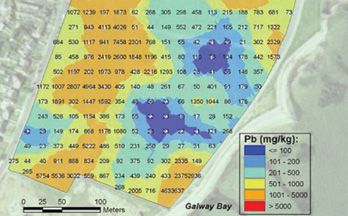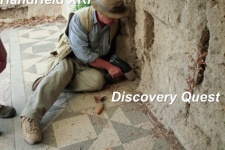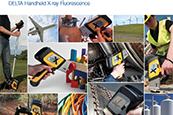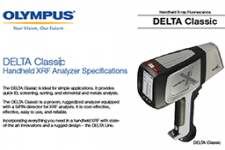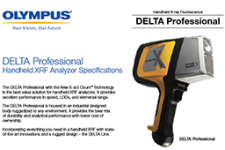DELTA Education & Research Handheld XRF Analyzer

Overview
DELTA Research & Discovery Handheld XRF Analyzers are for elemental analysis of Mg to U, PPM to 100%. Analyze 25+ elements on location for immediate results when time is of the essence & materials can't be transported, damaged, or altered. Calibration models, multiple spectra viewing, & optional PC & accessories for new levels of research and discovery.
The global pursuit of knowledge, understanding and adventure is at the heart of a Discovery Quest. Olympus encourages and supports projects, be they for archaeology, cultural heritage, forensic anthropology, geo-science, public health or to simply pursue ideas, dreams and answers. Not only is handheld XRF an incredible research tool, it is also an amazing instructional tool. Imagine your students seeing the periodic table come to life in their hands, getting immediate answers to questions, understanding the benefits and liabilities of various sampling techniques, realizing the nuances of analysis variables, and raising their eyebrows when they realize you actually know what you're talking about. Imagine the Possibilities.
 DELTA handheld XRF analyzers are used extensively by the commercial sector for fast and accurate answers that give an immediate return on investment, maintain quality of incoming and outgoing materials, and help meet regulatory health and well-being requirements. Handheld XRF is also used in the interest of expanding the human knowledge
base and satisfying curiosity. On occasion, these discoveries even turn into viable commercial applications.The only real limit to the use of handheld XRF in Research & Discovery is the imagination. Handheld XRF is uniquely positioned to explore the world and beyond. If fast and simple in-situ elemental analysis will enhance your research or teaching experience, contact us to find out how you can get a handheld XRF of your own.
DELTA handheld XRF analyzers are used extensively by the commercial sector for fast and accurate answers that give an immediate return on investment, maintain quality of incoming and outgoing materials, and help meet regulatory health and well-being requirements. Handheld XRF is also used in the interest of expanding the human knowledge
base and satisfying curiosity. On occasion, these discoveries even turn into viable commercial applications.The only real limit to the use of handheld XRF in Research & Discovery is the imagination. Handheld XRF is uniquely positioned to explore the world and beyond. If fast and simple in-situ elemental analysis will enhance your research or teaching experience, contact us to find out how you can get a handheld XRF of your own.
Archaeometry
The application of physics and chemistry to investigate archaeological and historical objects benefits tremendously from handheld XRF. Most governments will not allow investigators to remove materials from their original setting; and, sometimes their removal or even disturbance can destroy the value of the object. In-situ, non-destructive handheld XRF analysis provides valuable information for the assessment of a site - where to dig next, the relationships among loci, the homogeneity of materials, the authenticity of a cave or fresco painting and more. Combining GPS with handheld XRF in the field for instant metal mapping takes archaeological field research to an entirely new level.
Cultural Heritage
Conservation and restoration of cultural heritage objects pose challenges on many fronts. Whether the need is to identify the authenticity of an object or to determine the correct restoration materials, handheld XRF is an ideal tool to aid the analyst without damaging the object. Handheld XRF is used to help reproduce glaze colors on historical buildings with modern non-toxic material. It is used to help identify and restore inks on ancient manuscripts. Handheld XRF is also used to identify and/or repair alloys of jewelry, swords, sculpture, and even historical submarines. It is also used to identify arsenic or lead residue left by older, toxic preservatives on historical objects typically of natural material origin, such as feathers or skins. Many museums and cultural heritage institutes use handheld XRF on a regular basis.
Geo-Science
The field of geo-science includes discovery, safe use, and sustainablity of valuable land resources. This includes the safety of food sources with the growing demand for peri-urban farming and precision agriculture. The DELTA handheld XRF allows for rapid determination of toxic metals introduced to the soil and water as herbicides or pesticides, such as As and Pb, as well as correct placement of nutrients and fertilizers, such as Ca, Mg, P & K. It also includes the use of handheld XRF by geologists to determine the history of soil layers indicating events that have occurred throughout geological time. The DELTA XPLORER is ideal for this research as it allows for high intensity soil analysis in the field with results obtained and spatially modeled on-site.
Forensic Anthropology
Grave digging elicits numerous connotations, usually horror film in nature. But, forensic anthropologists actually study graves and their inhabitants to learn the origin of those buried, how they perished, and sometimes if the bodies were moved. Additionally, handheld XRF is utilized by forensic odontologists to assist in victim identification by analyzing dental restorative resin materials. Acting like a fingerprint, even if the body has been burned, this method has helped to identify victims of extreme incineration cases.
Public Health
Global advocacy groups work to uncover situations and materials that pose dangers to public health and well being and to determine a course of corrective action. For instance, high levels of lead (Pb), arsenic (As), mercury (Hg), chromium (Cr), cadmium (Cd) and other toxic metals can be found in the domicile and play areas of peoples in developing countries where the knowledge of their danger are not yet known or where regulations are simply not yet feasible. Handheld XRF analyzers are used to quickly ascertain the presence and quantity of these contaminants. This allows world health advocacy groups to determine a course of corrective action to help developing countries prosper with local resources and with safe working practices.
Features
DELTA Handled XRF Analyzer for Indoor and Outdoor Applications
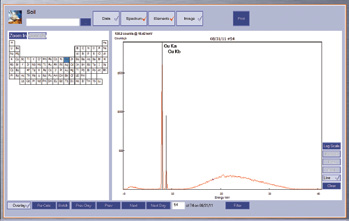 XRF for Compositional Analysis XRF Analyzes the Composition of MaterialsThe energies (keV) at which the peaks appear identify the elements present in a material. The intensities (Counts/s) of peaks correlate with the concentrations of the elements present in the materials. |
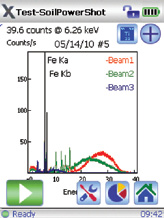 Qualitative analysis for Elemental ID | 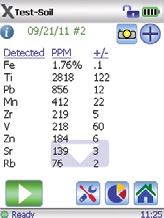 Semi-Quantitative analysis of composition |
The DELTA provides qualitative and semi-quantitative elemental information to guide research and identification of unknown or complex materials. It provides results fast and relevant enough to keep students engaged in classroom learning. It is sophisticated enough to provide directional results for applicable science-based projects in the field.
 Automatic karat determination | 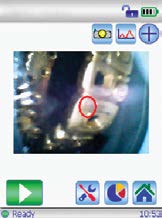 Camera and Collimator view of sample |
Close Up AnalysisThis DELTA can be equipped with a camera/collimator to provide the ability to focus in on a specific area of an object, take a measurement and save the spectra, composition, and digital image of the analysis area all at once. This is an ideal tool for archaeology, conservation and forensic science. | ||
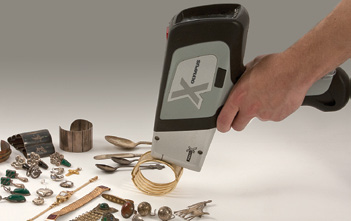 DELTA handheld XRF screens precious metals | ||
Nondestructive Handheld XRF can be used on a variety of materials including gold, silver, platinum, copper, brass, pewter, ceramics, mortar, glass, wood, paintings, fabrics, canvas, bone, rocks, ores, soil, slurries and fluids. |
Data Collection and AnalysisThe DELTA comes with factory calibrations for multiple applications. Soil Mode utilizes Compton Normalization for PPM to 3% levels of elements in light matrices, such as soil, liquids, mortar, bone, wood, fabric, or canvas. Mining Plus Mode utilizes Fundamental Parameters (FP) for elements at levels greater than 3% in light or complex matrices, such as rich soils, slurries, rocks, and ores. GeoChem Mode combines the low concentration capability of Soil Mode with the accurate handling of percent level concentrations of Mining Plus Mode. Alloy Plus Mode with Precious Metals utilizes FP for a wide range of elemental concentrations in metal or alloy matrices. |  |
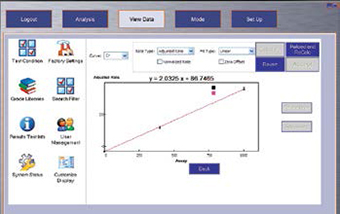 Empirical Calibration Mode is used to set-up calibration models with a series of user-specific certified standards. Linear or quadratic fits are available and results can be displayed in selectable units - %, ppm, μg/cm2 or alternate units. Once these calibration models have been created, named and stored, they can be transferred to the DELTA for use in the field. | 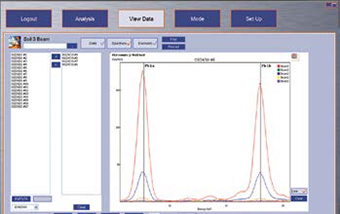 DELTA PC software provides additional capabilities for off line data analysis including periodic table selectable peak identification, concentration results, images collected, and spectral overlay of samples sets. It can also be utilized to remotely control the DELTA in a closed-beam portable workstation. |
Product Details
The DELTA
Everything You Need in Handheld XRF with State-of-the-Art Innovation
The New Generation DELTA Handheld XRF Analyzers are ergonomically advanced with a forward looking design incorporating the latest in electronics, components, and software technology.
The newly available DELTA X-act Count Technology can provide even better sensitivity and precision in faster time for more materials than before. Throughput is increased with the same or better precision in half the time for most elements.
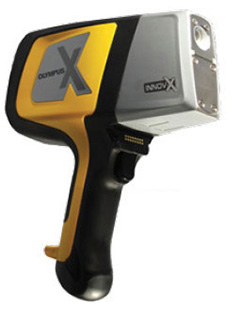 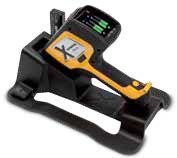  The unique DELTA Docking Station frees you from having to power down the analyzer. The station charges the analyzer battery and a spare, and performs periodic calibration checks. DELTAs can be operated 24/7 in the field with hot swap battery replacement. |
| |||||||||||||||||||||||||||
DELTA Handheld XRF Configuration
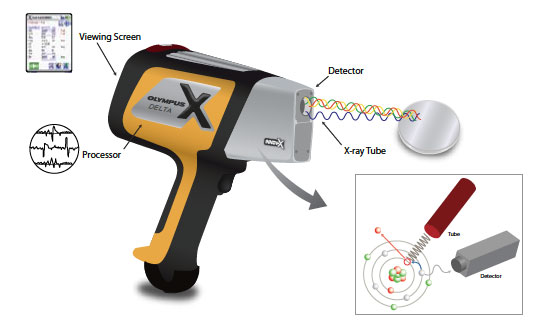
The DELTA brings the power and flexibility of handheld X-ray fluorescence spectrometry to the field. Ruggedized and ultra portable, this dramatically fast 24/7 technology provides accelerated testing times, allowing for hundreds more tests to be conducted per day with analytical confidence. The DELTA series analyzers are configured with powerful miniature X-ray tubes, Si-PIN detectors or highly advanced Silicon Drift Detectors (SDD), specialized filters, and multi beam optimization for the
ultimate in XRF field analysis. The DELTA's real overall value is to help make decisions in real time with minimal reliance on off-site laboratory testing.






